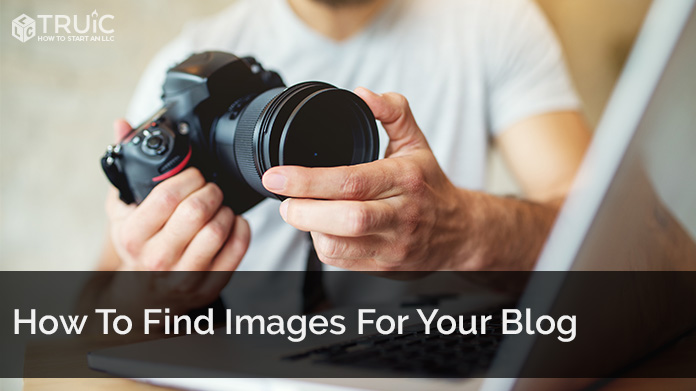11 Tools for Finding Images for Your Blog
Even if you’re a great writer, it is going to be hard to attract readers if your blog is just a wall of text. It is important that the design of your blog is just as good as the writing, and images are a big part of this. In this guide, we’ll give you some tips about how to use images, the best places to find them, and some image editing tools that you might find useful.
Our Top Small Business Tools:
- Use our Business Name Generator for help brainstorming your new venture’s name.
- Get your unique logo with our Free Logo Generator and start branding your business.

How to Use Images
Using images on your blog isn’t quite as simple as just throwing one on the top of each post and hitting publish. Here are some tips for how to best integrate images into your blog.
- Break up text – Large sections of uninterrupted text, even if there are breaks between paragraphs, can turn off some readers. Weaving images into your text can make your blog posts more inviting and visually appealing.
- Optimize image size – We mean two things by this. First: optimize the file size of your images. Large files can slow down your blog’s loading time and frustrate readers. And second: optimize the actual dimensions of your images. You want them to fit seamlessly into your blog posts, so try some different sizes and see which look best.
- Have permission – Only post images that you have permission to use. Whether you’re paying for images, simply attributing them to the source, or using images without restrictions, make sure you aren’t violating any trademark or copyright laws.
- Use quality images – You want to use clear images on your blog. A blurry image might be worse than no image at all.
Best Places to Find Images for Your Blog
There are a number of places online where you can find images to use for your blog. Keep in mind that even if an image is free, it may require some sort of attribution to be used or only be able to be used in certain ways. Make sure to know the rules and restrictions for an image before you use it!
Here are some of the best sources for images on the web:
- DepositPhotos – A paid service that offers many unique images that you won’t find on free photo sites. With a service like DepositPhotos, you will get a much better selection than free sites and not have to worry about royalties or attribution.
- Pexels – Offers royalty-free and public domain photos with a “Pinterest-type” feel to the browsing function.
- Unsplash – Marketed as “Powered by creators everywhere”, Unsplash offers a reasonable selection of free images.
- New Old Stock – Free historical and vintage images. Great for history niche projects.
- FoodiesFeed – A free source of food-themed images. High-quality images that will be sure to leave your readers feeling hungry.
- PixaBay – A source of free images that is popular for its search function. While the quality can be hit or miss, PixaBay does a good job of finding some images that fit the bill of your search term.
Useful Online Image Editing Tools
Once you’ve selected images for your blog, you may want to edit them in some way. This could include cropping, resizing, recoloring, adding filters, and more. Here are some online image editing tools that could help you out:
- Pixlr – Pixlr is unique in that it offers two separate editing tools.: Pixlr Editor is the more robust of the two, offering a wide variety of tools for more-experienced users, while Pixlr Express is a slimmed-down version with a less intimidating interface that is great for photo editing beginners or those who don’t need so many features.
- Canva – One of the most popular online photo editors for bloggers, Canva offers an easy-to-use interface that can help you create and edit images. While it doesn’t offer some of the more advanced features of other photo editors, it could be a good option for less-experienced users who need a simple program.
- Fotor – Fotor is a powerful online photo editing program that is great for more experienced users. While many of its features are behind a paywall, its advanced tools and numerous templates could make it worth checking out.
- BeFunky – With a relatively simple interface and a wide array of design elements, BeFunky is a good option for bloggers who want to easily create and edit images. While it doesn’t have some of the advanced editing options that other more powerful programs have, most bloggers should find it sufficient for their needs.
- Photopea – Photopea’s interface is similar to Photoshop, which makes it a great option for advanced users who have experience with that app. Photo editing beginners might find it bit intimidating, but if you are looking for a powerful editing tool, Photopea might be the right choice for you.
Conclusion
Images are an important part of having a successful blog. No matter the topic that you are writing about, adding relevant images will make your page look better and attract more readers. We hope that following the tips listed above and utilizing some of the mentioned resources will help you integrate images into your blog like a pro!